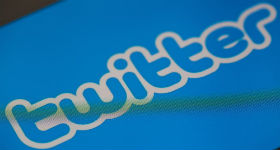Twitter announced recently that Jack Dorsey, who had been serving as the company’s interim CEO the past three months, will continue in the same role on a permanent basis. One of Twitter’s co-founders, Dorsey was the company’s original CEO when it was founded in 2006, but was replaced by Evan Williams, another co-founder, in October 2008.
Dorsey’s removal from the CEO position seven years ago was personally devastating. “It was like being punched in the stomach,” he told Vanity Fair back in 2011. Prior to Williams’ takeover, the Twitter site was frequently down, the company was losing money, and employees were not happy. Dorsey’s background was in programming, not management, and as a result, Twitter struggled from his lack of leadership experience.
Williams would step down as CEO in October 2010. He was replaced by COO Dick Costolo, who held the position before resigning back on July 1st. While those two served as CEO, Dorsey co-founded Square, along with Jim McKelvey, back in 2009, and became its CEO.
According to Forbes, a Square IPO should happen within in the next three months. Dorsey will remain CEO at both Square and Twitter, despite concerns that splitting time between the two makes it hard for Dorsey to help both companies effectively.
 Image via Shutterstock
Image via Shutterstock
Hundreds of millions of people use Twitter, but to many, its business model may not be obvious. How does a company that has to pay for extensive computing infrastructure recoup and then outpace those costs?
At least 85 percent of Twitter revenue is from advertising, which comes in several different forms of ‘promoted’ items that companies pay a fee to appear in. Promoted tweets appear in user feeds, just like normal tweets. In the Who to Follow section, Twitter recommends accounts for a user to follow, which also includes promoted accounts that companies that paid for. The Trends section is another area where paid promotions appear.
Another substantial source of revenue comes from data feeds, which Twitter licenses to four different companies. Whenever a live broadcast mentions a hashtag, user name, or anything connected to Twitter, these companies can quickly determine how strong the reaction was and how it correlated to the broadcast.
While many shareholders and former CEO Costolo have expressed support for Dorsey, the future won’t be easy. Twitter is not profitable, user engagement is low, and a lot of talent has left the company. Dorsey will have the difficult task of getting the Twitter ship righted while running Square, a feat many investors don’t think he can pull off.
Edited by
Kyle Piscioniere